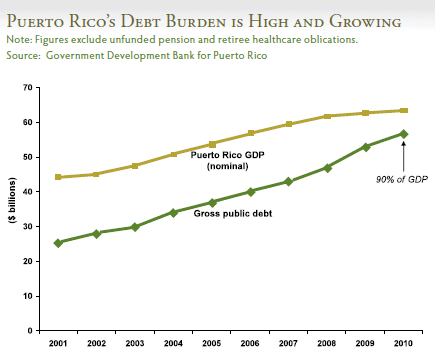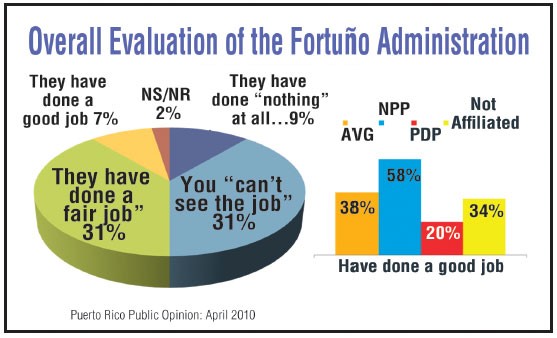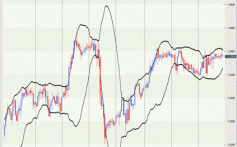Puerto Rico Economy
Post on: 16 Март, 2015 No Comment

Puerto Rico has one of the most dynamic economies in the Caribbean region. Plantation sugar production dominated Puerto Rico’s economy until the 1940s. Industry has surpassed agriculture as the primary sector of economic activity and income. Encouraged by duty free access to the U.S. and by tax incentives, U.S. firms have invested heavily in Puerto Rico since the 1950s (U.S. minimum wage laws apply). As a result, Puerto Rico’s export and import has prospered, nearly doubled between fiscal years 1987 and 1997.
Recently the economy has suffered budget cuts from U.S. The Puerto Rican economy has depended heavily on the tax incentives given to U.S. mainland companies and on federal transfers. In 1993, President Clinton aimed to cut the Section 936 tax exemption for U.S. companies and introduced legislation to Congress to replace it with a more modest tax credit linked to wages paid by those companies in Puerto Rico rather than to profits. It is estimated that 100,000 Puerto Ricans were employed by companies operating under Section 936 (of which 23,000 are in pharmaceuticals) and another 200,000 are indirectly employed. In President Clinton’s 1998 budget submission to Congress, proposed that existing Section 30A of the tax code be made permanent to provide an estimated U.S. $417mn a year in tax incentives to compensate for the phasing out of Section 936. Section 30A allows companies to claim 60% of wages and capital investment as allowances against tax. New firms may opt to incorporate themselves in Puerto Rico as controlled foreign corporations and receive the tax benefits provided by Section 901 of the U.S. Internal Revenue Code. Puerto Rico’s government aims to make up for the 936 loss by providing new local incentives, cutting taxes and encouraging economic development in other industries.
On the other hand, the agreement between the U.S. Canada and Mexico for the North American Free Trade Agreement (NAFTA) also has implications for Puerto Rico because of competition for jobs and investment. Although wage levels are lower in Mexico, Section 30A gives companies in Puerto Rico an advantage in pharmaceuticals and hi-tech industries. In low-skill labor-intensive manufacturing, such as clothing and footwear, Mexico has the advantage. Puerto Rico currently employs 30,000 in the clothing industry.
By some economists Puerto Rico’s economy is considered somewhat fictitious. Puerto Rico has very few natural resources of economic value and its economy relies mainly on Federal Aid from the United States Government, which depends on the industrialization programs and the tax incentives that U.S. offers. Economists believe that reinstating IRS Section 936 or making IRS Section 30A permanent for U.S. firms operating in Puerto Rico is not the best way to stimulate sustainable development on the island.
Important industries include pharmaceuticals, electronics, textiles, petrochemicals, processed foods, clothing and textiles. Sugar production has lost out to dairy production and other livestock products as the main source of income in the agricultural sector. The principal livestock are cattle, pigs and poultry. Tourism has traditionally been an important source of income for the island, with estimated arrivals of nearly 3.9 million tourists in 1993, and a 7% of the Island’s GNP, the tourism industry employees over 60,000 people.
The main government expenditures are on health, education and welfare.
Duties on imports from countries outside the U.S. tariff wall are collected at Puerto Rico’s borders but sent to the Puerto Rico Treasury, not the U.S. Treasury.
Finance
There are currently 19 commercial banks in Puerto Rico, most of them local corporations. Local banks institutions includes: Banco Popular, which is considered the largest banking institution in the island, with over one hundred branches throughout the island, Banco de San Juan, and Banco Mercantil de Puerto Rico; and branches of US: Citibank and FirstBank; and foreign banks: Banco Bilbao-Vizcaya, and Banco Santander, the second largest bank in Puerto Rico. The government owns and operates two specialized banks- the Government Development Bank (GDB) and the Economic Development Bank (EDB).
Banks offer a wide range of products and services such as checking and savings accounts, CDs, IRAs, loans, credit and debit cards, and electronic banking. Automatic teller machines are abundant, commonly referred to as ATHs. Banks are insured by the Federal Deposit Insurance Corporation. They are subject to all Federal controls applicable to banks in the United States of America.
Stock Market:
Puerto Rico does not have its own Stock Market, and many of its larger corporations are listed on U.S. stock markets. On June 15, 2004 Popular, Inc. become the first Puerto Rican Financial Company to open the Nasdaq Stock Market.
Currency

United States dollar (USD)
Since Puerto Rico is part of the United States, the island’s currency is the US dollar. Puerto Rico relies on the U.S. government to print money and to manage the money supply via the U.S. Federal Reserve and the Central Bank.
The US dolar is divided into 100 cents () and referred by locals as peso .
Coins: 1, called the centavo or chavito (penny); 5, called the velln or ficha (nickel); 10 (dime); 25, called the peseta (quarter); and the seldom-seen 50 (half-dollar) coin and $1.
Market Value Stats
Gross National Income (GNI per capita) (formerly GNP per capita): $53.4 billion; per capita: $13,675.1 (2006)
Puerto Rico is classified as a high income country, high income countries are defined by the World Bank as countries with a Gross National Income (GNI) per capita of $11,116 or more.
Interesting Fact














